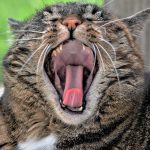Introduction
Selecting the right food for your cat is essential for their overall health and well-being. However, determining how often to feed them can be just as crucial. This guide offers insights into establishing a regular feeding routine that aligns with your cat’s age, health, and lifestyle.
1. Age-Appropriate Feeding
- Kittens (Up to Six Months): These young felines require more frequent meals to support their rapid growth. Consider feeding them three times a day.
- Adult Cats (Six Months and Beyond): Most adult cats thrive on two meals a day. This regimen promotes balanced nutrition and helps maintain their health.
- Senior Cats (Seven Years and Above): Stick to the same feeding schedule as adults, ensuring they receive the necessary nutrients for their age.
2. Health Considerations
- Diabetic Cats: If your cat has diabetes and requires insulin, coordinate feeding times with their medication schedule. Consult your vet for personalized advice.
- Hyperthyroidism: Cats with this condition may exhibit increased appetite. Treating the underlying ailment is crucial, and a balanced feeding routine should be maintained.
- Dental Issues: Older cats may struggle with chewing dry food. Offer wet food or soften dry kibble with water for easier consumption.
3. Selecting the Right Food
- Dry Food: Ensure it is complete and balanced. While cost-effective and long-lasting, cats on a dry food diet require ample water intake.
- Canned Food: With its high water content, canned food is a valuable addition or alternative to dry kibble. Some cats prefer its palatability.
- Combining Both: Mixing dry and canned food can offer a balanced diet. Focus on meeting your cat’s caloric needs without overfeeding.
- Portion Control: Follow feeding guidelines provided on pet food labels. Adjust portions to suit your cat’s specific needs.
- Avoid Overfeeding: Adjust portions if your cat’s activity level or metabolism differs from average. Prevent excess weight gain.
4. Free Feeding vs. Controlled Meals
- Free Feeding: Suitable for self-disciplined cats who regulate their own intake. Ensure fresh dry food is provided daily.
- Controlled Meals: Divide meals into smaller, scheduled portions. This approach suits cats prone to overeating.
5. Multi-Cat Households
- Individual Feeding: In homes with multiple cats, consider feeding them separately to ensure each receives the correct portion.
- Varied Locations: Place feeding stations in different parts of the house to accommodate all your cats.
Conclusion
Establishing a consistent feeding routine is vital for your cat’s overall health. Tailor their meals based on age, health status, and lifestyle. By selecting the right type of food and managing portion sizes, you’ll provide them with the balanced nutrition they need. Remember, consult your vet for personalized feeding advice, especially if your cat has specific health concerns.



